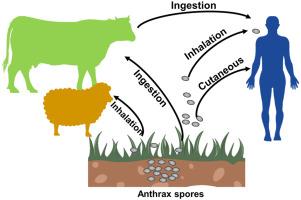A review of epidemiological characteristics, risk factors, and prevention strategies of human anthrax in China
引用次数: 0
Abstract
Anthrax is a severe infectious illness triggered by the bacterium Bacillus anthracis. This bacterium is naturally found in soil and mainly impacts domestic and wild animals. Human anthrax infection occurs primarily through close occupational contact with infected livestock. Anthrax has been reported each year in China for decades since it became a reportable disease. However, concerns about anthrax are growing in recent years. In this paper, we reviewed the literature on Anthrax and Bacillus anthracis. We delineated the epidemiological traits of human anthrax in China as well as the potential risk factors for outbreaks. Additionally, we offer recommendations for prevention and control. We emphasize that effective management of anthrax in humans largely depends on the successful control of the disease in animals. It is also suggested that anthrax is unlikely to completely disappear or escalate into a large-scale epidemic in China in the near future. Human cases of anthrax are expected to remain at a low prevalence, which alleviates the need for excessive panic. Instead, proactive measures should be implemented to enhance the prevention and control of anthrax, ultimately leading to further improvements in public health.

中国人类炭疽的流行病学特征、风险因素和预防策略综述
炭疽是由炭疽杆菌引发的一种严重传染病。这种细菌天然存在于土壤中,主要影响家畜和野生动物。人类感染炭疽主要是通过与受感染牲畜的密切接触。自从炭疽成为一种可报告的疾病以来,几十年来中国每年都有炭疽的报告。然而,近年来人们对炭疽的担忧与日俱增。本文回顾了有关炭疽和炭疽杆菌的文献。我们描述了中国人类炭疽的流行病学特征以及爆发的潜在风险因素。此外,我们还提出了预防和控制建议。我们强调,人类炭疽病的有效控制在很大程度上取决于动物炭疽病的成功控制。我们还提出,炭疽在中国不太可能在短期内完全消失或升级为大规模流行病。预计人类炭疽病例仍将处于低流行水平,因此不必过度恐慌。相反,应采取积极措施,加强炭疽病的预防和控制,最终进一步提高公众健康水平。
本文章由计算机程序翻译,如有差异,请以英文原文为准。
求助全文
约1分钟内获得全文
求助全文

 求助内容:
求助内容: 应助结果提醒方式:
应助结果提醒方式:


